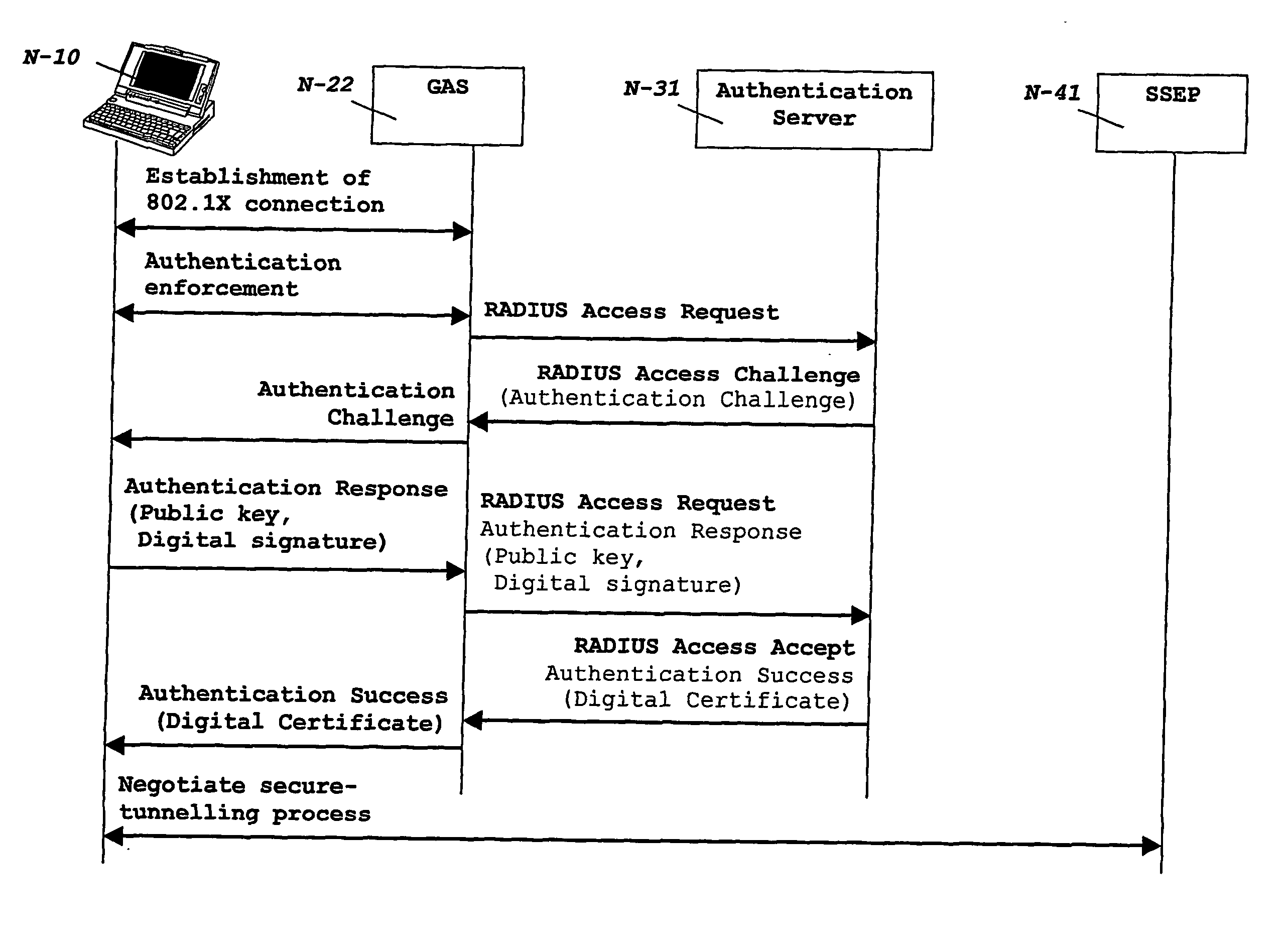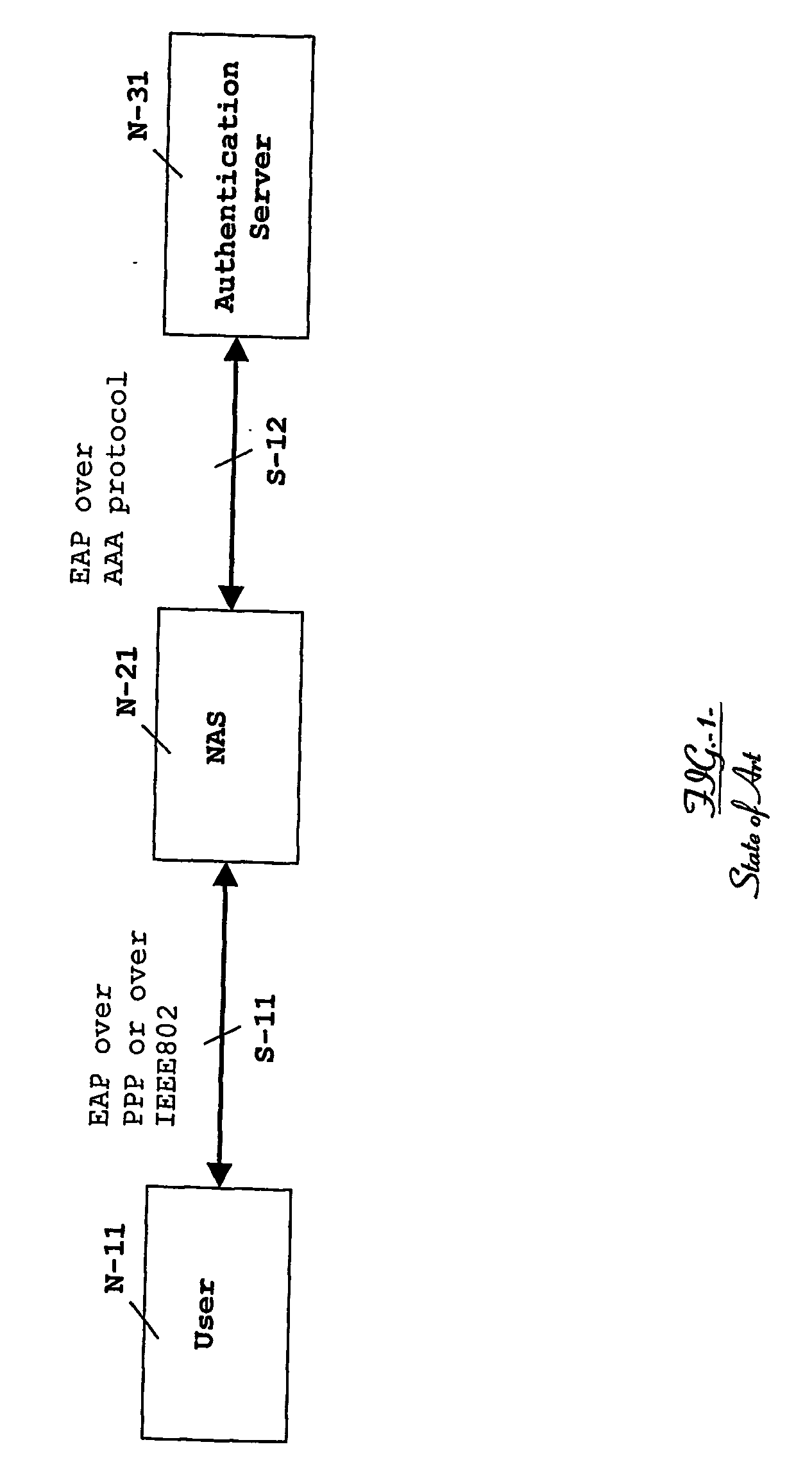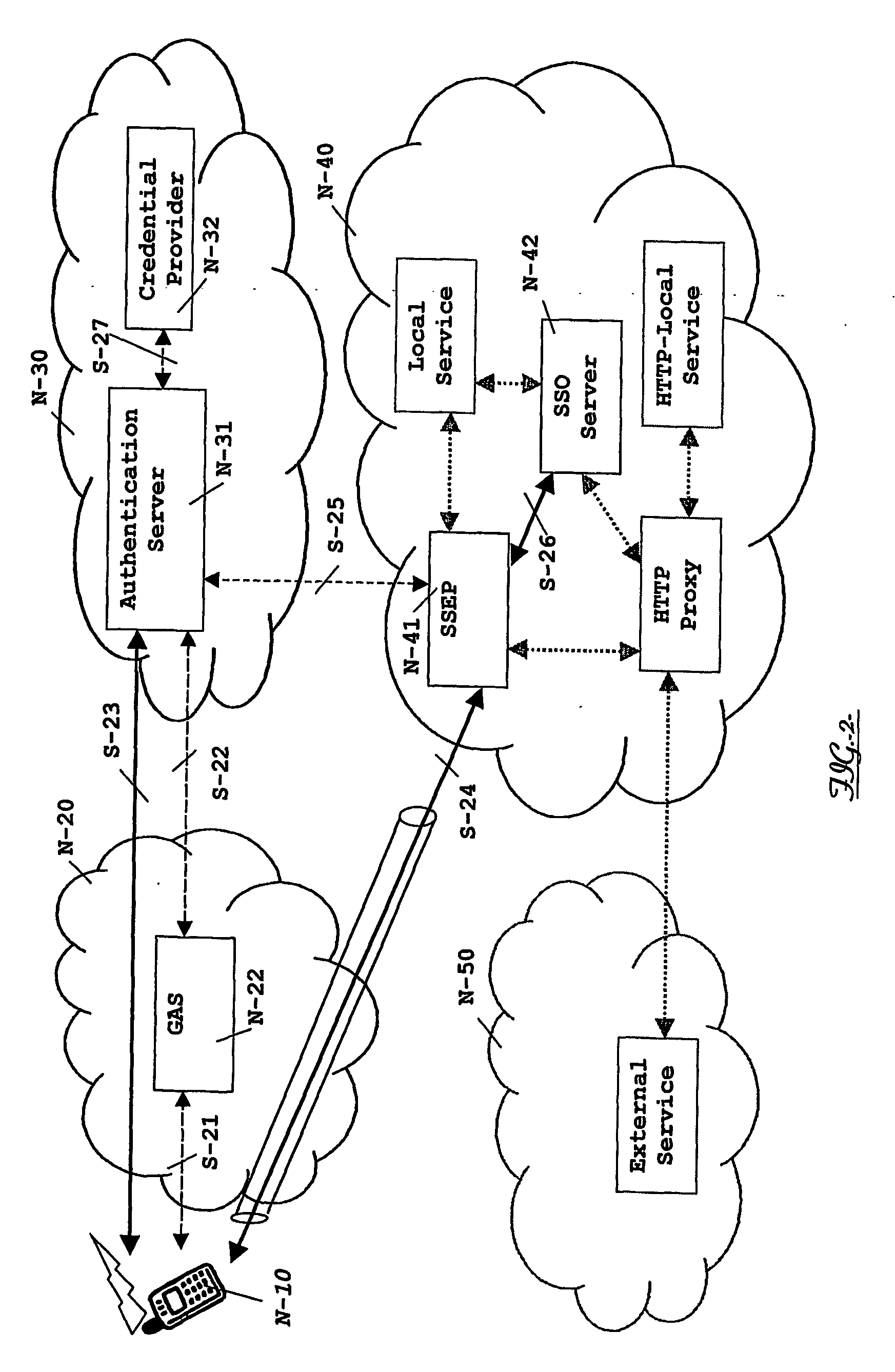Apparatus and method for a single sign-on authentication through a non-trusted access network
a technology of authentication and authentication method, applied in the field of single sign, can solve the problems of not having open specifications or standard technology, not suggesting how an idp works, and putting the burden of supporting different authentication mechanisms on the user or terminal sid
- Summary
- Abstract
- Description
- Claims
- Application Information
AI Technical Summary
Benefits of technology
Problems solved by technology
Method used
Image
Examples
first embodiment
[0086] In a first embodiment, under a Walled-Garden scenario illustrated in FIG. 4, when the user accesses an HTTP local service (N-44), an intermediate node (N-43) intercepts the access (S-30, S-29) to the HTTP local service. This intermediate node (N-43), which is preferably an HTTP-Proxy though a general purpose firewall might be arranged to this end as well, queries (S-28) the SSO Server (N-42) on whether the user had been previously authenticated or not. A pseudo-identity to identify the user in this case is the previously assigned IP address that ensures data origin authentication. The SSO Server (N-42) receiving such query checks that there is an active session tagged with said IP address, and sends an acknowledgement or, rather, a service credential to the HTTP-proxy (N-43), the latter allowing the user's (N-10) access to the HTTP local service (N-44) and, optionally, allocating a cookie into the user's terminal browser. This cookie, if provided, may be further used to ident...
second embodiment
[0087] In a second embodiment, under a Walled-Garden scenario illustrated in FIG. 5, when the user accesses to non-HTTP services (N-45) or, more generally speaking, when the user access a Local Service (N-45) not requiring the above HTTP-proxy, the Local Service (N-45) may be directly accessed (S-24, S-31) from the user terminal side (N-10), likely through the SSEP (N-41). The requested local service (N-45) makes use of the previously assigned IP address as a pseudo-identity to directly query (S-32) the SSO Server (N-42) on whether the user had been previously authenticated. The SSO Server (N-42) receiving such query checks that there is an active session tagged with said IP address, and sends an acknowledgement or, rather, a service credential to the Local Service (N-45) for allowing the user's (N-10) access.
[0088] In a third embodiment, under a Federated SSO scenario illustrated in FIG. 6, the user (N-10) attempts to access an external service (N-51) and, accordingly with the LAP ...
PUM
 Login to View More
Login to View More Abstract
Description
Claims
Application Information
 Login to View More
Login to View More - R&D
- Intellectual Property
- Life Sciences
- Materials
- Tech Scout
- Unparalleled Data Quality
- Higher Quality Content
- 60% Fewer Hallucinations
Browse by: Latest US Patents, China's latest patents, Technical Efficacy Thesaurus, Application Domain, Technology Topic, Popular Technical Reports.
© 2025 PatSnap. All rights reserved.Legal|Privacy policy|Modern Slavery Act Transparency Statement|Sitemap|About US| Contact US: help@patsnap.com



